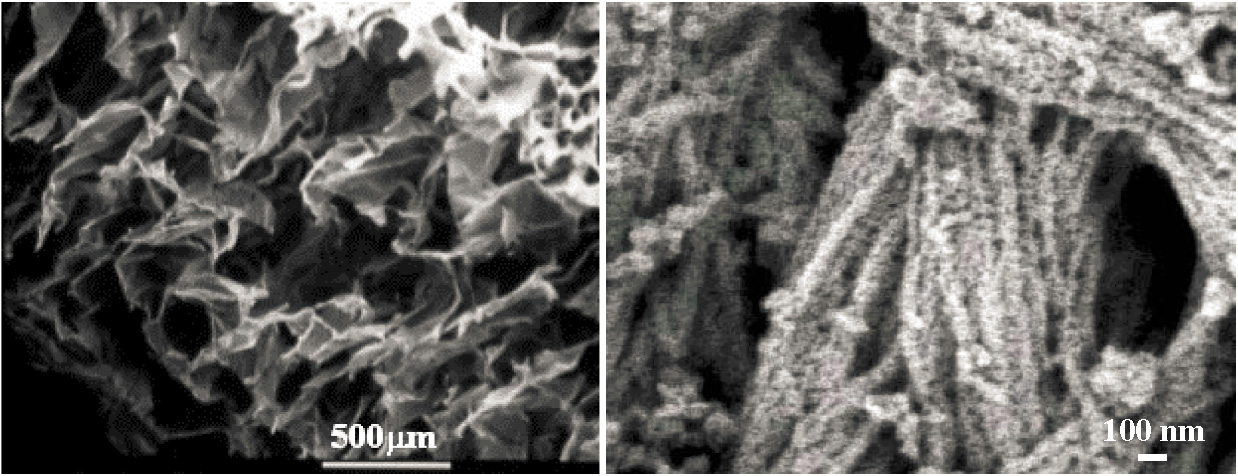Course Description
The goal of this course is to teach the principles of materials science, chemical and mechanical engineering, and cell biology underlying the use of materials for the development of implantable and injectable devices.
Course Info
Instructors
Departments
Learning Resource Types
theaters
Lecture Videos
notes
Lecture Notes
menu_book
Open Textbooks
Readings

Scanning electron micrographs of biomaterials employed as scaffolds for tissue engineering and regenerative medicine. (Left) A porous collagen-glycosaminoglycan sponge-like scaffold; for select applications (viz., defects in the dermis of the skin) the sponge-like biomaterial alone can serve as an implantable medical device to facilitate the regeneration of the tissue. (Courtesy of Prof. Ioannis Yannas.) (Right) A natural bone mineral scaffold produced by removing the organic matter from bovine bone; the native collagen fibril structure (diameter and periodic pattern) is reflected in the organization of the apatite crystallite structure. The natural bone mineral matrix is used in the clinic to facilitate bone regeneration in defects in various locations, including the mandible and maxilla to enable insertion of dental implants. (Courtesy of Prof. Myron Spector.)










